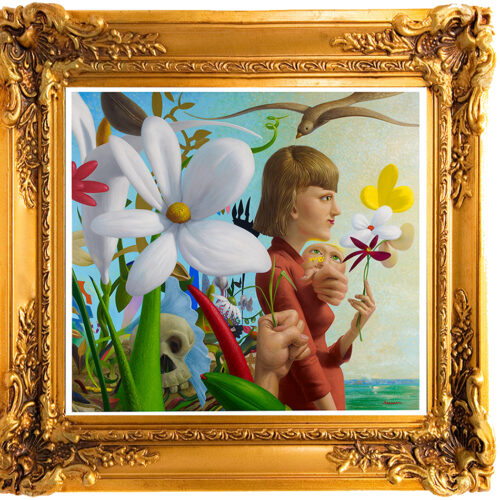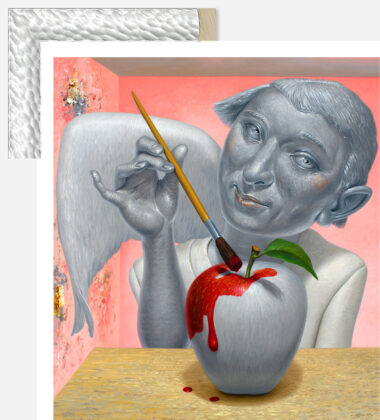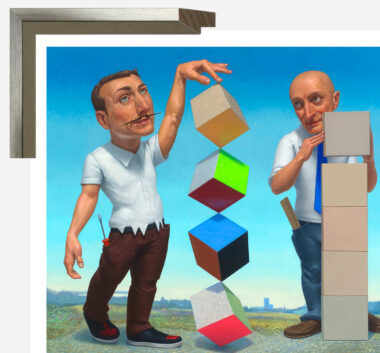Framing Artwork
The Right Frame for the Job

Finding the perfect frame depends on more than just the frame itself – it has to complement the art, accommodate wall size, traffic, and personal style. While there are premade and readily available frames available on the market, we’ve gathered some information to consider while shopping for the right custom frame.
As an artist, I often use a professional framer/frame shop and prefer that they handle the artwork and matting and framing. They won’t damage the artwork and can dry mount a print and matt and frame and do so dust free. It is a worthwhile way of having the art properly framed. And I get to see a variety of frame selections in person.
If you wish to frame artwork yourself and handle the artwork with care, then framing the artwork yourself is definitely an option. I do that too sometimes!
For our DIY Canadian customers, we recommend our affiliate Custom Frames Canada. We chose this company for their great selection of styles, easy-to-use website, and affordable prices and they offer free shipping on orders over $149. To keep costs low and prevent damage, frames are shipped ready-to-assemble – they offer an easy-to-follow framing guide on their website
For our American customers, we recommend michaels.com which often has sales, promo codes, and coupons. Michaels has in-store custom framing and matting and online framing selection and services.
If you prefer to use a local framer who offers a personal hands-on approach, this is a nice way to support your local community!
What you will need
- Art print dimensions (paper size + image size) – For quick reference, visit the shop page and select which Michael Abraham art print you purchased.
Room/Piece
Before getting into the details of the frame it’s good to look at the big picture – not just the print about to go on the wall – but the wall itself. Is it a high-traffic space?
Does the wall receive sun or humidity throughout the day or seasonally? Are there plans to create a personal gallery or salon by adding other frames around it? While assessing the risk of damaging your art is important, thinking ahead to interior design goals that will inspire a vision and add personality to your space.
Tip: Preserve the vibrant color of the print for years to come, by hanging your wall art out of direct sunlight and moisture. Consider U/V protective glass / plexi for rooms with strong sunlight.
Choosing a style
After finding the best place to hang your artwork it’s time to find a style that fits the overall artwork and room decor. In this example we will be referring to an online custom frame provider, customframescanada.ca to browse over 800 frame styles and framing accessories.
Depending on the room wall color, choosing a frame should complement the overall feel of the art. For a sleek and minimal interior, black and white frames complement the content of the image and can work with other personal pieces.
For rooms with a more traditional & classic, or country style there are a variety of wood frames, such as Mahogany/Cherry or Walnut/Oak styles to choose from.

‘Dark Brown Riveted Cap‘ solid wood frame with ‘One Trick Pony‘ print
Looking for something more regal or just love a bold frame, try the espresso/chocolate, gold, or bronze/copper frames.

‘Silver Carnavale‘ solid wood frame with art print ‘Pleasure in Heaven‘
For a bright and modern style, you could pick an accent color from the artwork and choose a frame in that color spectrum!

‘Rainbow Canary’ solid wood frame with print ‘Rooted Flight‘ print
If you like a neutral or industrial look, check out the silver/pewter frames.

‘Collins Bright Champagne Stem’ pewter frame with ‘The Conceptualists’ print
Matting
It’s recommended that you allow for some breathing space between the glass (glazing) and the art print. This can be achieved using a mat board or plastic spacers.
When choosing a mat, always make sure that it’s archival/acid-free to keep your art protected through the years. While there are many colors of mat board available, choosing a warm-white or off-white mat will let the colors of the art shine through while future-proofing your art if you repaint your interior walls.
Spacers
The purpose of the mat is to provide space between the paper and glass to allow for air circulation and prevent damage from mold and trapped moisture. What if you like the look of a clean border and paper edges and don’t want to use a mat? Plastic accessories called ‘spacers’ help create breathing space between the glass/plexiglass.
Backing
To keep your art print flat and protected within its frame, it needs a supportive backing. This can come in many different materials and firmness – from economy to archival, it’s important to make sure that the materials used for backing are ‘acid-free’.
Tip: Don’t use cardboard. Cardboard is not archival and could tint your artwork over time.
Ordering your Custom Frame
After you have had some time to think about where and which style suits your frame best, it’s time to order the frame through the website.
1. Dimensions – using the paper size of the piece, select the dimensions from the dropdown and add them to the cart.
2. Add Accessories – This is where you purchase a hardware hanging kit [link], plexiglass, and acid-free backing. For plexiglass, we recommended the [] for the clarity and color that comes through.
[Note: The maximum size that these products can be ordered online is 32” x 36”. Customers who have purchased from the 30” collection will need to contact the retailer directly]
Plexiglass vs Non-Glare Plexiglass
Most commonly associated with glass, the clear cover between the art print and frame, is also called its ‘glazing’. Plexiglass aka ‘acrylic’, has become a safer, lighter, and easier-to-ship alternative to glass when it comes to framing, especially for larger pieces. In some buildings, there are rules against using glass due to safety concerns of it falling and causing harm.
On the canadacustomframes site, they offer clear plexiglass and non-glare plexiglass. So what’s the difference?
Clear Plexiglass is lightweight, has high optical clarity, and is shatter resistant.
Non-Glare Plexiglass is also lightweight and shatter-resistant while having a matte-like finish that helps to scatter the light and reduce unwanted glare. Non-glare might be overkill for some rooms but could help with bright rooms with strong sunlight, while regular clear plexiglass is suitable for a dark dining room or office.
As the intro states, it all depends on the room. If you are hanging your wall art on a sunny south-facing wall, or have bright reflecting water on your walls you may want to consider using a U/V protect glass/Plexi. The bright light that circulates and floods the room will make glare inevitable – and then, of course, the light changes.
Depending on your room and budget, there are many options available to make your print shine. Even if you purchase the highest quality glass, following the best practices for lighting your piece can make all the difference. [Check out Michael’s Quick Guide to Lighting, here!]
Tip: Plexiglass should be cleaned with a very wrung-out damp microfibre cloth. Window cleaner is not recommended on plexiglass. Lay your art on a flat surface to prevent water drips.

